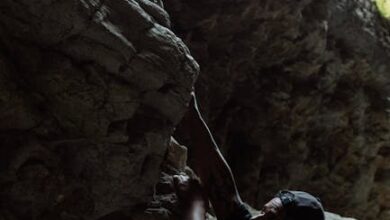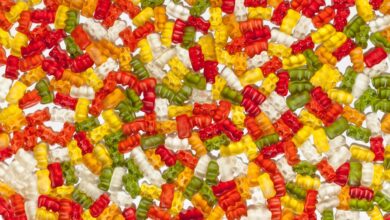Best Free Sign Up Bonus No Deposit

Hey there, bonus hunters! Ever heard of a “free sign-up bonus with no deposit”? It sounds like something out of a dream, right? Basically, it means you can get free stuff – usually bonus cash or free spins – just for creating an account. No need to pull out your wallet or enter your credit card details. Think of it as a “try before you buy” kind of deal, but with the potential to actually win real money!
What Exactly is a No Deposit Bonus?
Let’s break it down even further. Imagine walking into a store and the owner hands you a gift certificate just for walking in the door. That’s essentially what a no deposit bonus is like. Online casinos, sportsbooks, and even some sweepstakes sites use these bonuses to attract new players. It’s a way for them to show off their platform and hopefully get you hooked on their games. You sign up, they give you a little something, and you can start playing. If you win, great! If you don’t, you haven’t lost anything but a little bit of your time.
Why Do Companies Offer These Bonuses?
You might be wondering, “What’s the catch? Why would a company just give away free money?” Well, it’s all about attracting new customers in a very competitive online world. Think of it as an advertising expense for them. They’re hoping that you’ll enjoy your experience so much that you’ll stick around and eventually make a deposit. It’s also a great way for them to stand out from the crowd and get your attention. Plus, it gives you, the player, a chance to test out their games and see if you like their platform before committing any of your own cash.
Finding the Best No Deposit Bonuses
Okay, so you’re sold on the idea of free money. But where do you find these magical no deposit bonuses? The key is to do your research. Start by searching online for reputable casinos and sportsbooks that offer these kinds of promotions. Look for sites that are licensed and regulated, meaning they’re held to certain standards of fairness and security. There are also lots of websites that specialize in listing no deposit bonuses from various online platforms. These can be a great resource for finding the latest deals.
Things to Watch Out For: Wagering Requirements
Now, before you get too excited, there’s something important you need to know about: wagering requirements. Almost every no deposit bonus comes with these, and they can significantly impact your chances of actually cashing out any winnings. A wagering requirement is the amount of money you need to bet before you can withdraw your bonus funds or any winnings you’ve earned from them. For example, if you receive a $10 no deposit bonus with a 20x wagering requirement, you’ll need to bet a total of $200 before you can withdraw anything. Always read the terms and conditions carefully to understand the wagering requirements associated with a bonus.
Other Important Terms and Conditions
Wagering requirements aren’t the only thing you need to be aware of. Here are a few other common terms and conditions that you should always check before claiming a no deposit bonus:
- Maximum Win Amount: Many no deposit bonuses have a limit on how much you can actually win and withdraw. Even if you hit a big jackpot, you might only be able to cash out a certain amount.
- Game Restrictions: Some bonuses can only be used on specific games. Make sure the games you want to play are eligible before claiming the bonus.
- Time Limits: You’ll usually have a limited time to use your bonus and meet the wagering requirements. If you don’t, the bonus and any winnings may be forfeited.
- Country Restrictions: Not all bonuses are available to players in all countries. Make sure you’re eligible to claim the bonus based on your location.
Reading the fine print might not be the most exciting part, but it’s crucial to understanding the true value of a no deposit bonus.
Safety First: Choosing Reputable Platforms
It’s super important to choose reputable and trustworthy platforms. With so many online options available, it’s easy to stumble upon less-than-savory sites. Here are a few tips for staying safe:
- Check for Licensing: Look for platforms that are licensed and regulated by a recognized authority. This ensures they’re operating legally and adhering to certain standards.
- Read Reviews: See what other players are saying about the platform. Look for reviews on independent websites and forums.
- Secure Website: Make sure the website uses SSL encryption (look for “https” in the address bar). This protects your personal and financial information.
- Customer Support: Test out the customer support channels to see how responsive and helpful they are.
Taking these precautions can help you avoid scams and ensure a safe and enjoyable experience.
Alternatives to No Deposit Bonuses
While no deposit bonuses are great, they’re not the only type of bonus available. Here are a few other options to consider:
- Deposit Bonuses: These are bonuses that you receive when you make a deposit. They usually offer a larger bonus amount than no deposit bonuses, but you need to risk your own money to claim them.
- Free Spins: These are often offered as part of a welcome package or promotion. They allow you to spin the reels of a slot game for free, with the chance to win real money.
- Loyalty Programs: Many online platforms have loyalty programs that reward players for their continued play. These programs often offer exclusive bonuses, perks, and rewards.
Each type of bonus has its own advantages and disadvantages, so it’s important to choose the one that best suits your needs and playing style.
Can You Really Win Real Money with a No Deposit Bonus?
Yes, it’s absolutely possible to win real money with a no deposit bonus! However, it’s important to be realistic about your chances. No deposit bonuses are designed to attract new players, not to make them rich. The wagering requirements and other terms and conditions can make it difficult to cash out any winnings. But with a little luck and a smart strategy, it’s definitely possible to turn a free bonus into real cash.
Frequently Asked Questions (FAQ)
Are no deposit bonuses really free?
Yes, they are technically free in the sense that you don’t have to deposit any of your own money to claim them. However, you will likely need to meet wagering requirements before you can withdraw any winnings.
What are the most common types of no deposit bonuses?
The most common types are bonus cash and free spins. Bonus cash can be used on a variety of games, while free spins are typically restricted to specific slot games.
How do I claim a no deposit bonus?
The process varies depending on the platform. In most cases, you’ll need to create an account and verify your email address. Some platforms may require you to enter a bonus code during registration.
What happens if I don’t meet the wagering requirements?
If you don’t meet the wagering requirements within the specified time frame, the bonus and any winnings you’ve earned from it will be forfeited.
Can I claim multiple no deposit bonuses?
In most cases, you can only claim one no deposit bonus per platform. However, you may be able to claim no deposit bonuses from multiple different platforms.
So, there you have it – the lowdown on free sign-up bonuses with no deposit! They can be a fantastic way to explore new online platforms and potentially win some real money without risking your own. Just remember to read the terms and conditions carefully, choose reputable platforms, and have fun! Good luck, and may the odds be ever in your favor!



